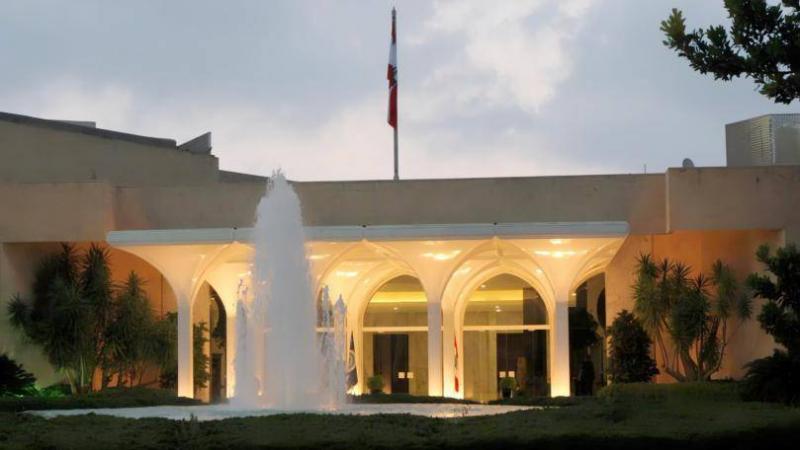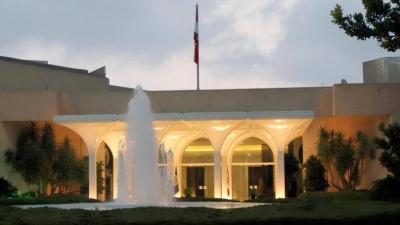It suffices to note that over the course of 79 years, from Lebanon’s independence in 1943 to the present day, power has only transitioned smoothly from one president to another during two out of 12 presidential terms. This highlights the complex issues surrounding the endings of these terms, many of which currently result in vacancies that pose a real threat to both the Lebanese system and the fragile entity that is Lebanon, which is beset by all types of crises.
With about two months left in the current president Michel Aoun's term, current indicators suggest that the country will once again enter a presidential vacuum similar to that of 2014, after the term of president Michel Sleiman ended. The current balances in the parliamentary council do not allow any faction to secure the quorum for an election session, which the constitution sets at 86 members, and it seems quite difficult for the conflicting parties to gather support from 65 members for any candidate without a prior settlement.
According to former Minister Professor Ibrahim Najjar, the phrase “end of terms” in parliamentary and “democratic” systems is accompanied by the colloquial expression: “oh forsaker, may you see many evils!” In other words, this phrase correlates with another scene of power practice, stemming from the “decay of power,” due to its practice followed by criticisms, attacks, the collapse of slogans, and the emergence of issues that necessitate a change in authority and majority to make way for a new majority, which is referred to as the alternation of power. Najjar notes that “the presidency in Lebanon has not deviated from this rule.” He questions, “Why should credit be given to someone on the verge of being ousted and abandoned? Isn’t politics fundamentally the art of reaching power?” He emphasizes that in Lebanon, a “democratic country in principle and parliamentary in its broad constitutional outlines, the ends of terms have been characterized by a range of practices, primarily the naturalization of foreigners for commissions or influence, the appointment of ambassadors, the sharing of spoils and deals, and the preparation for political inheritance. In other words, Lebanon on paper and in the constitution differs from Lebanon in practice.”
Najjar mentions in an interview with Asharq Al-Awsat that the ends of terms from the Taif Agreement until now “have not been similar.” He points out that “during the Syrian mandate, the terms of both presidents Lahoud and El-Hrawi were extended, and after the Syrian army withdrew from Lebanon in April 2005, its ally (Hezbollah) in Lebanon sought to impose president Michel Aoun, while MPs faced assassination attempts and assassinations in 2005, and the governmental palace was besieged, and the parliament session was closed until the Doha Agreement was signed, leading to the election of president Michel Sleiman instead of General Michel Aoun. The latter remained in a position of dissent against president Michel Sleiman throughout his term.”
He adds, “President Sleiman left Baabda at the constitutional time, departing with ceremonial honors. However, the country fell into a vacuum because the allies of president Michel Aoun practiced a policy of ‘the edge of hell’ or ‘the edge of chaos.’”
Since its independence in 1943, Lebanon had seen 8 presidents before the Taif Agreement: Bishara al-Khouri, Kamil Chamoun, Fouad Chehab, Charles Helou, Suleiman Franjieh, Elias Sarkis, Bashir Gemayel, and Amine Gemayel. After Taif, five presidents took office: René Moawad, Elias Hrawi, Emile Lahoud, Michel Sleiman, and Michel Aoun.
Political writer George Ghanem, who closely followed Lebanese events in detail, recounts how terms ended before the Taif Agreement, which was signed in 1989 to end the Lebanese Civil War, how they now conclude, and the common denominator among most terms was that their endings did not witness a smooth transition of power. Ghanem points out that “before Taif, there was one smooth transition of power, from Fouad Chehab to Charles Helou; however, the term remained known as the Chehab era, and the authority and administration were Chehabist, as if we witnessed a transfer of power within the same era.” He adds, “After Taif, the only relatively smooth transition was from Elias Hrawi to Emile Lahoud, which occurred within the same Syrian era.”
Ghanem notes that “since the first era of independence, from Bishara al-Khouri’s term until now, we have grown accustomed to terms ending either with bloody revolutions, peaceful ones, constitutional vacuums, or with disturbances, problems, and wars. President Bishara al-Khouri fell in 1952 through a constitutional white coup and disturbances leading to the election of president Kamil Chamoun, whose term ended with a bloody revolution that divided the country along sectarian lines: one faction supporting Egyptian President Gamal Abdel Nasser, the other supporting Americans and the West. The revolution began in 1958 and did not end until the onset of Fouad Chehab's term.”
He adds: “Charles Helou’s term ended with problems with Palestinian fighters, leading to Suleiman Franjieh’s term, which ended with the outbreak of the civil war starting on April 13, 1975.” While Ghanem points out that “Elias Sarkis’s term ended with an Israeli invasion,” he considers that with the end of Amine Gemayel's term in 1988, “the first republic ended; no president was elected, sessions were disrupted, and at that time, a government was formed under army commander Michel Aoun, composed of military council members, boycotted by Muslim members, leading to a constitutional-legal conflict over its legitimacy, against the legitimacy of Salim al-Hoss's government, which represented the other Muslim side, which Gemayel deemed illegal and unconstitutional because its actual president, Rashid Karami, was assassinated, and it was also a resigned government chaired by Salim al-Hoss in proxy.”
After Taif, there was no crisis at the end of Elias Hrawi’s term, which saw an extension of his presidential term; rather, the crisis occurred in 1995 when constitutional amendments were made to extend it for three years, creating, according to Ghanem, a significant issue in the country, adding: “From the date the constitutional amendment was proposed in April 1995 until Hrawi's extension in October 1995, the Central Bank lost about a billion and 850 million dollars from its reserves.” In 1998, the elections proceeded smoothly, bringing Emile Lahoud under the umbrella of the Syrian era.
Lahoud’s term ended after the July 2006 war, marked by the boycott of what became known as the “14 March” forces and their Western and Arab allies of the president, significantly contrasted by a major disagreement with then-prime minister Fouad Siniora, whose government Lahoud and his allies, primarily Hezbollah and the Free Patriotic Movement, deemed illegitimate due to the withdrawal of Shiite ministers from it. Ghanem recounts: “Lahoud left the Baabda Palace on November 24, 2007, after issuing a statement suggesting that he handed over power to army commander General Michel Sleiman, who didn’t acknowledge such a statement. Siniora’s government continued to issue decrees that were not published or enforced.”
The tense situation continued along with the presidential vacuum until May 25, 2008, when president Michel Sleiman was elected. This occurred after Hezbollah and its allies invaded the western part of Beirut and part of the mountains on May 7, which broke the balance of power, leading to an Arab mediation led by Qatar under a regional-international mandate, resulting in the signing of the Doha Agreement that served as a condition book for forming the government and adopting an amended 1960 electoral law.
Ghanem considers that “Michel Sleiman's term practically ended in 2011, when the Doha Agreement collapsed, springing the Arab uprising, and the U.S. withdrawal from Iraq,” noting that the last three years of the term were marred by multiple security disturbances and explosions, with the country genuinely on the brink of civil war. He states: “After Mikati’s resignation in 2013, Tammam Salam remained for eleven months until he managed to form a government, leaving the country in a vacuum for about a year. Salam's government was formed to manage the presidential vacuum that was anticipated and lasted two years and six months.” Ghanem recalls that “at that time, an extension of Michel Sleiman’s term was proposed; however, Michel Aoun did not accept it, nor did Michel Sleiman himself; he knew that Hezbollah would not support such a proposal.”
Subsequently, 45 sessions to elect a president were called, but the legal quorum was not secured throughout two years and six months until a consensus was reached to elect Michel Aoun in 2016. While many believe that the country is heading towards a phase similar to the vacuum following Michel Sleiman's term at the end of October, Ghanem sees “the situation as different today since the division was clearer between 2014-2016, and the plans were explicit, and more crucially, the economic reality was not as it is now, while the candidates were limited.” He adds: “Currently, the parliamentary council is fragmented, 14 March forces are dispersed, and the international forces supporting them are retreating. Iran is unable to impose its candidate, and there are no clear and serious candidates who can gather the necessary votes for their victory. Additionally, unlike the previous time when there was an existing government, we are currently under a caretaker government, and there is a political dispute over its constitutional legitimacy.”
Ghanem predicts that the sessions for electing a president could be disrupted by both sides of the conflict to prevent the rival candidate from winning.




